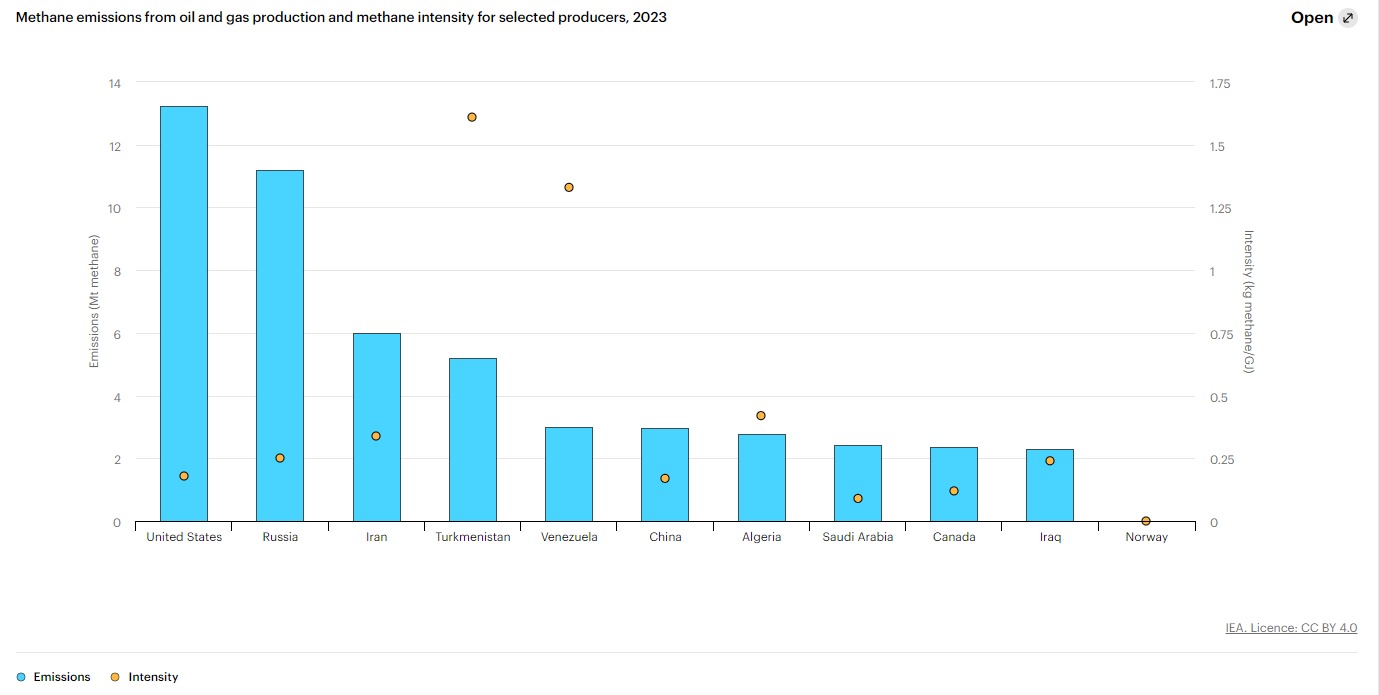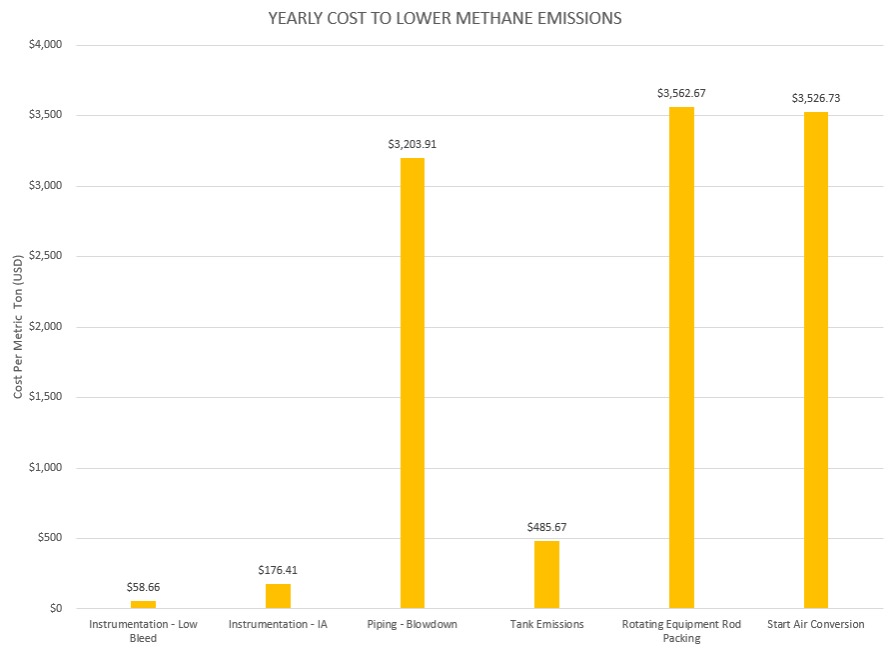Canada leads the world with commitments to methane reduction, focusing on federal regulations to reduce the emissions from oil and gas operations. Considering Canada’s advanced industry for developing clean energy, the country leads on many metrics related to methane intensity and still has some of the most ambitious goals.

IMAGE SOURCE: https://www.iea.org/reports/global-methane-tracker-2024/key-findings
Even for the oil and gas industry, which can responsively deploy capital, the challenge many operators face relates to the pace at which the regulations are changing and making strategic decisions on where to deploy this capital in the most effective way. Focusing on the current landscape of regulations, as well as best practices by industry peers, will support the effort in planning for a net-zero environment by 2050.
Regulation Approach to Methane Reduction
The Canadian federal government set targets for the country to meet the reduction of methane emissions to 40–45% below 2005 levels by 2030 and net-zero emissions by 2050. The new regulatory target set out in the draft regulations is 75% of 2012 levels by 2030. Though not an official regulation at this time, there is a very good chance this lands in 2024 and has been released in the draft regulation.
Depending on the locations of an operator, many spanning multiple provinces, regulations are applied through various entities. In the provinces of Alberta, British Columbia, and Saskatchewan, equivalency agreements mean that provincial groups will ensure those operations meet, or exceed, the federal requirements.
The focus of the regulations has been to limit fugitive emissions by inspection and remediation operating practices and requiring facilities to implement design and technology deployment to reduce venting sources.
Cost Analysis of Deployable Solutions to Reduce Methane Venting
CANUSA EPC has executed various methane reduction designs across oil and gas facilities in both Canada and the US. With those project engagements, we have built economic analysis of the costs of methane reduction for various venting sources. The applications with the best return involve instrument gas conversion, followed by tank vent capture. The next grouping of applications looks at venting from rotating equipment and process gas blowdowns from operations.

What will most affect these costs per tonne for specific facilities?
- the cost of capital utilized by the operator,
- electrical costs, and
- the number of sources that can be aggregated under a single solution.
Curious about which applications will provide the best return within your facility? Request an analysis of your facility opportunities here.
Staying Ahead of The Regulation Trend
For those seeking a more in-depth understanding of the regulations and published plans, CANUSA EPC has collated whitepapers for both the Canadian and US landscapes related to methane reduction.
We also encourage participation in organizations that will share successes and challenges in this space between peers and technology providers. For example, in Alberta, MELA, the Methane Emission Leadership Alliance, is a leading organization that brings together data, technologies, and solution providers that monitor, measure, implement and reduce methane emissions.
Conclusion: Staying Ahead of the Regulations
Regulations will be impacting both the existing assets and new designs for oil and gas facilities. Understanding what will be required and incorporating that need into the future design of facilities and operating technologies will best position your operations to be a leader in methane intensity.
Download the whitepaper for an overview of the regulating entities and plans for your operations.
Visit our website to see some unique applications in methane emission strategies.
About CANUSA
CANUSA EPC is an Engineering, Procurement, and Construction firm that supports clients building energy infrastructure and facilities. We execute projects through our integrated model, minimizing construction risks and supporting the safe operation of the facility. Our team is in Calgary and Denver, allowing us to serve the North American market with local resources and an expandable team to meet our client’s needs. Contact us today.